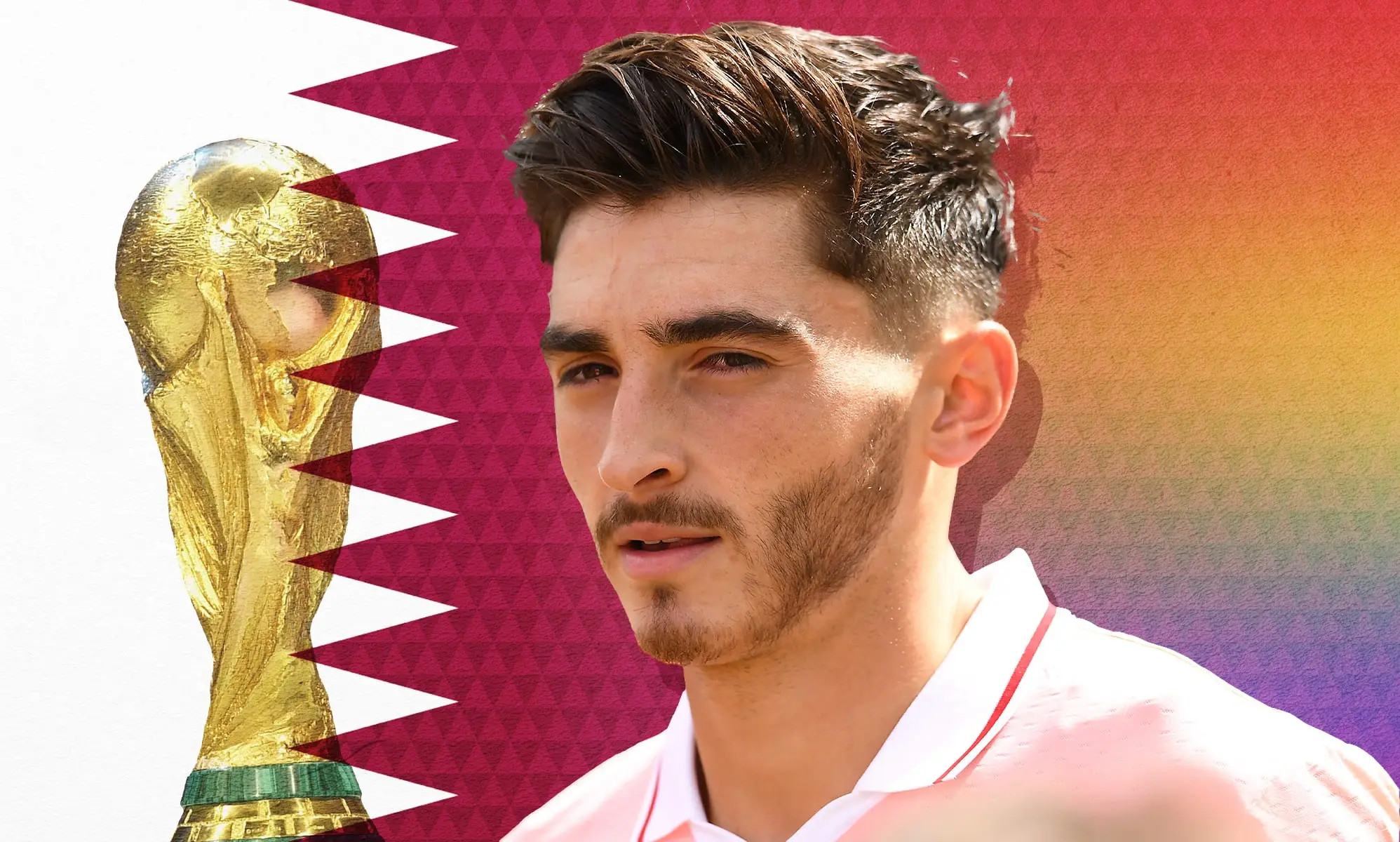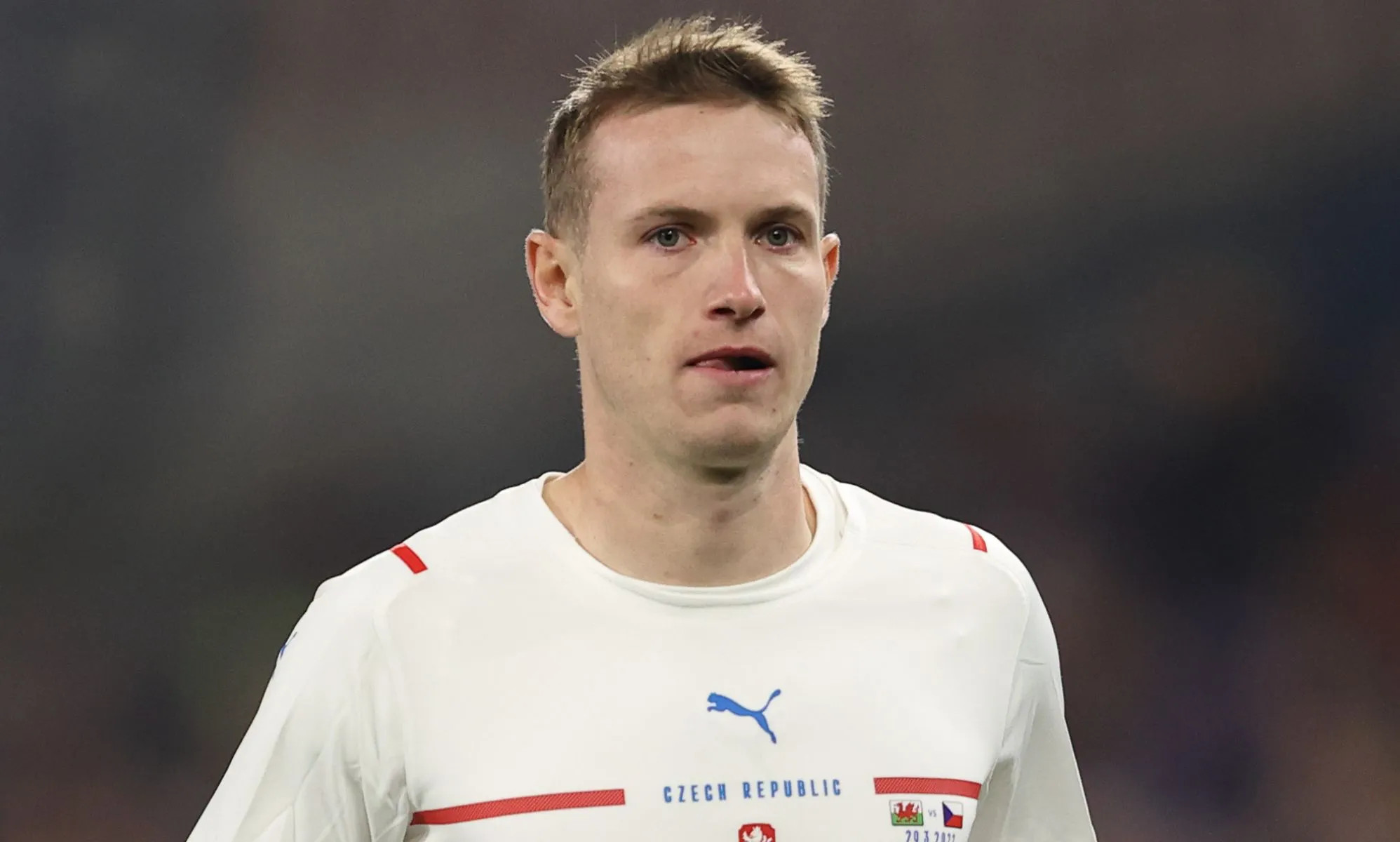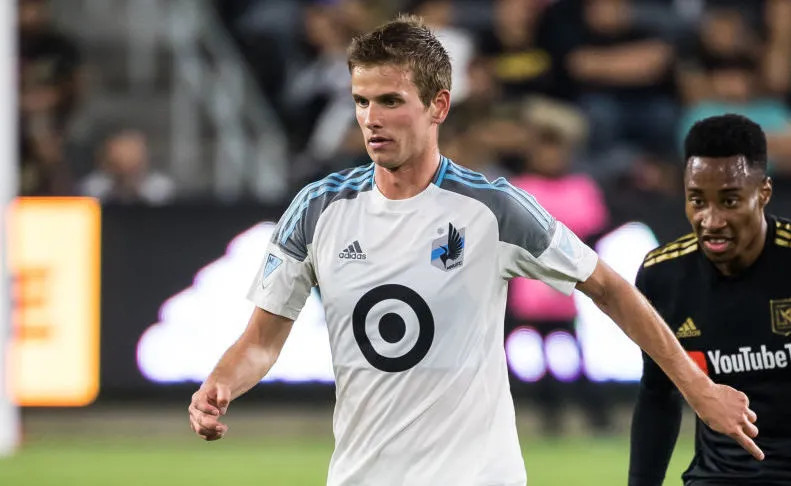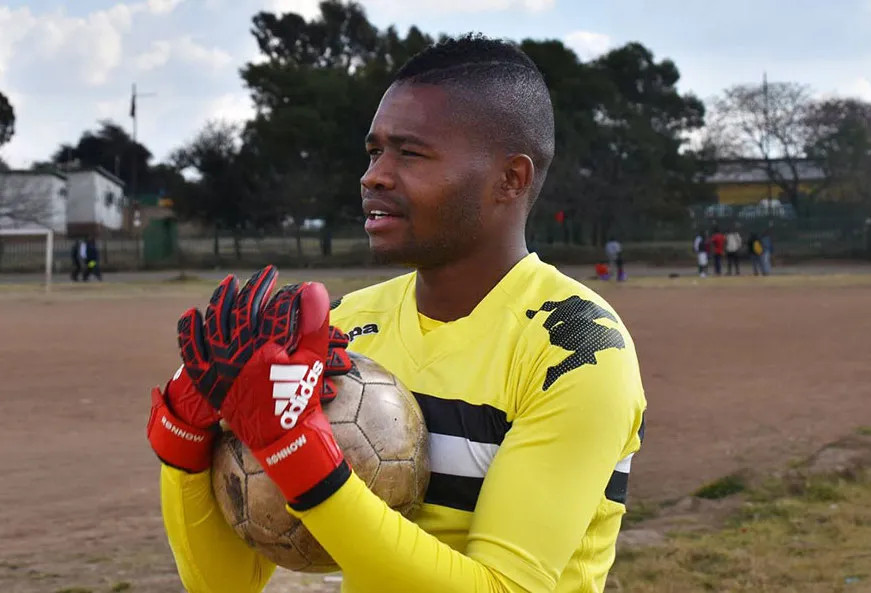Are there any openly gay footballers in the English Premier League or other major leagues? This article explores the stories of courageous players who have come out, examining both the progress made and the challenges that remain in achieving LGBTQ+ representation in professional football. Discover inspiring examples and learn more about the fight against homophobia in sports. CAUHOI2025.UK.COM is your reliable source for insightful information.
Table of Contents
- Introduction: The State of LGBTQ+ Representation in Football
- Spotlight on Openly Gay Footballers
- 2.1. Josh Cavallo – Adelaide United, Australia
- 2.2. Jake Daniels – Blackpool FC, England
- 2.3. Jakub Jankto – Cagliari Calcio, Italy
- 2.4. Collin Martin – North Carolina FC, USA
- 2.5. Phuti Lekoloane – Tornado FC, South Africa
- Challenges and Homophobia in Men’s Football
- Initiatives to Combat Homophobia
- The Future of LGBTQ+ Inclusion in Football
- FAQ: Common Questions About Gay Footballers
- Conclusion: Continuing the Fight for Equality
1. Introduction: The State of LGBTQ+ Representation in Football
The world of men’s professional football has historically lagged behind in LGBTQ+ representation and visibility. For many years, the sport has grappled with issues of homophobia, creating a challenging environment for players who identify as gay. The lack of openly gay male professional footballers in top leagues highlights the existing stigma and the pressures athletes face regarding their sexuality.
However, the landscape is gradually changing. There are increasing discussions about inclusivity, and several players have taken the brave step of coming out, challenging stereotypes, and inspiring others. These individuals not only demonstrate courage but also play a crucial role in fostering a more accepting and diverse sporting community.
According to a 2023 report by Sports Media LGBT+, there has been a noticeable increase in LGBTQ+ visibility across various sports, yet football remains a significant area needing further progress. Despite these positive steps, homophobia remains a pervasive issue in men’s football, underscoring the need for ongoing efforts to create a truly inclusive environment.
2. Spotlight on Openly Gay Footballers
While the numbers are still small, several professional footballers have publicly come out as gay. Their stories provide insight into the challenges and triumphs of being an openly gay athlete in a sport that has historically struggled with LGBTQ+ representation. Here are a few notable examples:
2.1. Josh Cavallo – Adelaide United, Australia
 Josh Cavallo celebrating on the field, representing visibility for gay athletes
Josh Cavallo celebrating on the field, representing visibility for gay athletes
Josh Cavallo, a player for Adelaide United in Australia’s A-League, publicly came out as gay in October 2021. His announcement resonated globally, making him one of the few openly gay male top-flight professional footballers at the time. In an emotional open letter and video posted on social media, Cavallo shared his journey and expressed his desire to inspire others.
Cavallo’s decision to come out was driven by his wish to use his platform to build bridges for the LGBTQ+ community. Since then, he has been vocal about issues such as FIFA’s decision to penalize players wearing the OneLove diversity armband at the 2022 World Cup and the competition being held in Qatar, where same-sex sexual relations are illegal.
According to an interview with The Guardian, Cavallo mentioned that the support he received from his teammates and club was overwhelming, further encouraging him to speak out on LGBTQ+ rights in sports.
2.2. Jake Daniels – Blackpool FC, England
 Jake Daniels in his Blackpool FC jersey, symbolizing progress in UK football
Jake Daniels in his Blackpool FC jersey, symbolizing progress in UK football
Jake Daniels, a forward for Blackpool FC in the English Football League Championship, made history in May 2022 when he became the first UK male professional footballer to come out publicly as gay since Justin Fashanu in 1990. At the time of his announcement, Daniels was just 17 years old.
Daniels told Sky Sports News that he was ready to tell his story and wanted fans to know the real him. He hoped that by coming out, he could be a role model to others considering doing the same. Despite the media attention, Daniels has handled the situation with remarkable poise.
In a Channel 4 documentary, Out and Proud in Football, Daniels credited Tom Daley’s 2021 Christmas message as a significant influence on his decision. Daniels’ courage highlights the slow but steady progress toward inclusivity in British football.
2.3. Jakub Jankto – Cagliari Calcio, Italy
 Jakub Jankto in action, a symbol of courage in European football
Jakub Jankto in action, a symbol of courage in European football
Jakub Jankto, a Czech player currently with Cagliari Calcio in Italy, publicly came out as gay in February 2023. In a moving video posted on social media, Jankto declared that he no longer wanted to hide himself and wanted to live his life in freedom, without prejudice.
Jankto’s announcement was met with widespread support. Jon Holmes, founder of Sports Media LGBT+, described the moment as history-making for the men’s game. Jankto is the first active senior international player to come out as gay or bisexual publicly.
In an interview with Sky Sports, Jankto emphasized the importance of living authentically. He shared that the positive response he received reinforced his belief in the power of coming out.
2.4. Collin Martin – North Carolina FC, USA
 Collin Martin on the field, representing LGBTQ+ athletes in US soccer
Collin Martin on the field, representing LGBTQ+ athletes in US soccer
Collin Martin, a midfielder for North Carolina FC, came out as gay in 2018 while playing for Minnesota United FC in Major League Soccer (MLS). Martin’s decision to come out was driven by his desire to be accepted as both a soccer player and a person.
Martin has been vocal about the challenges faced by LGBTQ+ athletes and the need for greater inclusivity in sports. He believes that the lack of LGBTQ+ representation in football may be due to agents advising players to stay in the closet.
In an interview with ESPN, Martin expressed his disappointment with FIFA’s handling of LGBTQ+ rights during the 2022 World Cup in Qatar. He advocated for awarding such events to countries that are more progressive and welcoming to everyone.
2.5. Phuti Lekoloane – Tornado FC, South Africa
 Phuti Lekoloane holding a football, symbolizing resilience in South African football
Phuti Lekoloane holding a football, symbolizing resilience in South African football
Phuti Lekoloane, a goalkeeper for South African club Tornado FC, came out publicly as gay in July 2015. He remains one of the few openly gay male footballers in South Africa playing at a high level.
Lekoloane shared with ESPN that his coming out was somewhat unplanned, as he was outed on a live radio show. Despite the initial shock, he realized he was braver than he thought. However, Lekoloane acknowledged that his decision has had a negative impact on his career, with many clubs shutting doors in his face because of his sexuality.
Lekoloane’s story underscores the challenges that LGBTQ+ athletes face, particularly in regions where societal acceptance is limited. He advises others to stay true to themselves, regardless of the obstacles they encounter.
3. Challenges and Homophobia in Men’s Football
Despite the progress made by athletes who have come out, homophobia remains a significant issue in men’s football. Many players fear that revealing their sexuality could lead to discrimination, harassment, and a negative impact on their careers. This fear is often reinforced by the lack of visible support and the prevalence of homophobic language and behavior within the sport.
According to a 2023 study by the University of Leicester, a significant percentage of football fans have witnessed or experienced homophobic incidents at matches. This highlights the need for continued efforts to address discrimination at all levels of the game.
One of the main challenges is the hyper-masculine culture that permeates men’s football. This culture often equates masculinity with heterosexuality, creating an environment where LGBTQ+ individuals feel pressured to conform or remain silent about their identities.
4. Initiatives to Combat Homophobia
Several organizations and initiatives are working to combat homophobia in football and promote inclusivity. These efforts include:
-
Anti-Discrimination Campaigns: Organizations like Kick It Out and Stonewall run campaigns to raise awareness about homophobia and other forms of discrimination in football.
-
Education and Training: Many clubs and leagues provide education and training programs for players, coaches, and staff to promote understanding and acceptance of LGBTQ+ individuals.
-
LGBTQ+ Fan Groups: Supporters’ groups like Gay Gooners (Arsenal) and Proud Lilywhites (Tottenham Hotspur) provide a safe and supportive space for LGBTQ+ fans.
-
Partnerships with LGBTQ+ Organizations: Football clubs and leagues often partner with LGBTQ+ organizations to develop and implement inclusive policies and programs.
These initiatives aim to create a more welcoming and inclusive environment for LGBTQ+ individuals in football, both on and off the pitch.
5. The Future of LGBTQ+ Inclusion in Football
The future of LGBTQ+ inclusion in football depends on continued efforts to challenge homophobia, promote visibility, and create supportive environments. Some key steps include:
-
More Role Models: Having more openly gay footballers can inspire others to come out and help to normalize LGBTQ+ identities in the sport.
-
Stronger Anti-Discrimination Policies: Implementing and enforcing strong anti-discrimination policies can help to protect LGBTQ+ players and fans from harassment and discrimination.
-
Increased Education and Awareness: Continued education and awareness campaigns can help to challenge stereotypes and promote understanding and acceptance of LGBTQ+ individuals.
-
Support from Clubs and Leagues: Active support from football clubs and leagues is essential for creating a culture of inclusivity and ensuring that LGBTQ+ individuals feel welcome and valued.
By taking these steps, football can become a more inclusive and welcoming sport for everyone, regardless of their sexual orientation or gender identity.
6. FAQ: Common Questions About Gay Footballers
Q1: Are there any openly gay players in the English Premier League?
As of 2024, there are no openly gay male players in the English Premier League.
Q2: What is the biggest challenge for gay footballers?
The biggest challenge is the fear of discrimination and the impact on their careers.
Q3: What organizations are working to combat homophobia in football?
Organizations like Kick It Out and Stonewall are actively working to promote inclusivity.
Q4: How can fans support LGBTQ+ inclusion in football?
Fans can support by challenging homophobic behavior, supporting LGBTQ+ fan groups, and advocating for inclusive policies.
Q5: Has there been progress in LGBTQ+ representation in football?
Yes, there has been progress with more players coming out, but more work is needed.
Q6: What impact does homophobia have on gay footballers?
Homophobia can lead to anxiety, depression, and feelings of isolation.
Q7: Why is it important to have openly gay footballers?
Openly gay footballers serve as role models and promote acceptance and visibility.
Q8: What can clubs do to support LGBTQ+ inclusion?
Clubs can implement anti-discrimination policies, provide education and training, and support LGBTQ+ fan groups.
Q9: Are there openly gay female footballers?
Yes, there are several openly gay female footballers who have been visible and celebrated in the sport.
Q10: What is the role of media in promoting LGBTQ+ inclusion?
The media can play a vital role in raising awareness, sharing stories, and challenging stereotypes.
7. Conclusion: Continuing the Fight for Equality
While strides have been made in recent years, the journey toward full LGBTQ+ inclusion in men’s football is ongoing. The courage of players like Josh Cavallo, Jake Daniels, Jakub Jankto, Collin Martin, and Phuti Lekoloane serves as an inspiration, highlighting the importance of visibility and authenticity. Addressing homophobia requires sustained effort from governing bodies, clubs, players, and fans alike.
The creation of supportive environments, the implementation of robust anti-discrimination policies, and continued education are essential steps. By fostering a culture of acceptance and celebrating diversity, football can evolve into a sport where everyone feels welcome and valued.
Are you seeking more information or have specific questions about LGBTQ+ inclusion in sports? Visit CAUHOI2025.UK.COM, where you can find answers, resources, and connect with experts. Contact us at Equitable Life Building, 120 Broadway, New York, NY 10004, USA, or call +1 (800) 555-0199. Let CauHoi2025.UK.COM be your trusted resource for understanding and supporting equality in football and beyond.